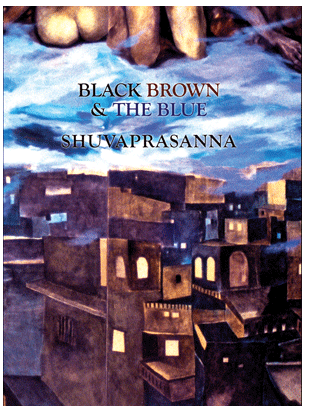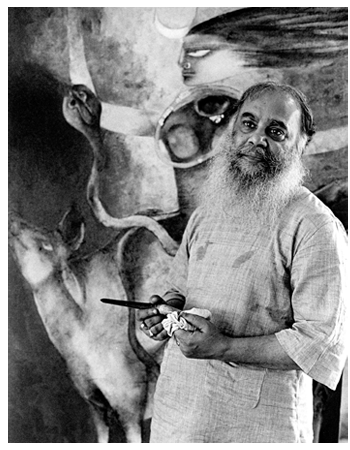- Prelude
- Editorial
- Subodh's 'return home'
- A Conversation with TV Santosh
- It's a War Out There
- Raqib Shaw
- Illusions in Red from a very British Indian Sculptor
- Stand Alone: Shibu Natesan
- Reading Atul Dodiya
- Bharti Kher: An Obsession for Bindis
- Bose Krishnamachari
- The Image - Spectacle and the Self
- From Self-depiction to Self-reference: Contemporary Indian Art
- GenNext: The Epitome of New Generation Art
- Kolkata's Contemporary Art A Look in the Mirror
- Innovation Coalesced with Continuing Chinese Qualities
- Kala Bhavana-Charukala Anushad Exchange Program
- Montblanc Fountain Pens
- Dutch Designs: The Queen Anne Style
- Bangalore Dance Beat
- Decade of change
- Distance Between Art & It's Connoisseur
- What Happened and What's Forthcoming
- 3rd India Art Summit
- New Paradigms of the Global Language of Art
- Black Brown & The Blue: Shuvaprasanna
- Art Events Kolkata
- Musings from Chennai
- Art Bengaluru
- Printmaker's Season
- Mumbai Art Sighting
- The Pause of Profound Stillness
- Previews
- In the News
- The Rebel Queen: An icon of her own times yet looked down upon
ART news & views
Black Brown & The Blue: Shuvaprasanna
Volume: 3 Issue No: 14 Month: 3 Year: 2011
by Nanak Ganguly
Black Brown & The Blue published by Roli Books to mark a major retrospective of Shuvaprasanna at Rabindra Bhawan, Lalit Kala Akademi New Delhi(Feb 23-March 3, 2011) is a richly illustrated volume that presents a varied and critical appraisal of his oeuvre and life. The wide range  of essays offer insights into the intellectual and creative nature of Shuvaprasanna's practice and the formal concerns that govern his visual text. Long essays on Shuvaprasanna extend to mind altering substances of choices deployed at different phases of the artist's career and do not only coincide the retrospective alone and is an extensive trail of a fascinating career in Arts. It is designed among other aims to whet an appetite for the grandly produced tome which has already been unveiled at the Indian Art Summit last month. The simple process of being told things you may not know, or perhaps all these short studies do not provide radically new or revisionary critical readings of art language or other works. The restricted critical lives rubric- pithy, bullet point biographies of the great moderns mean that these writers can touch on many significant events and other movements in only a cursory way; nonetheless, this lucid and readable accounts, admiring but disenchanted, manage to pick its way through most of Shuvaprasanna's major observations, genres, and curious obsessions, and serves a good introductory text for general readers, as well as a model of concision for art aficionados. Repeatedly it asks what just what possessed Shuvaprasanna the artist.
of essays offer insights into the intellectual and creative nature of Shuvaprasanna's practice and the formal concerns that govern his visual text. Long essays on Shuvaprasanna extend to mind altering substances of choices deployed at different phases of the artist's career and do not only coincide the retrospective alone and is an extensive trail of a fascinating career in Arts. It is designed among other aims to whet an appetite for the grandly produced tome which has already been unveiled at the Indian Art Summit last month. The simple process of being told things you may not know, or perhaps all these short studies do not provide radically new or revisionary critical readings of art language or other works. The restricted critical lives rubric- pithy, bullet point biographies of the great moderns mean that these writers can touch on many significant events and other movements in only a cursory way; nonetheless, this lucid and readable accounts, admiring but disenchanted, manage to pick its way through most of Shuvaprasanna's major observations, genres, and curious obsessions, and serves a good introductory text for general readers, as well as a model of concision for art aficionados. Repeatedly it asks what just what possessed Shuvaprasanna the artist.
It is hardly surprising that, well into the 1960's the nature of Indian response to European modernism are pronounced just because early modernism was brought here by artists who had gained their experience of it through London and France, and only to a lesser extent through New York. It existed, however skeptically, as part of an internationally fluid scheme of ideas and interventions. Having wavered in their affiliation and with the emergence of International Abstraction in the fifties and sixties the relationship was changed but surprisingly, not severed. Although the momentum for this new art derived from New York, it was the experience of it gained through London and Paris that proved significant to some of us. But at the same time, the absence of a predominant international art centre and the criticism for being an appendage of the West coincided with the growth of a regional impetus in contemporary art, which altered, as a matter of course, the relationship between the two worlds. At the same time social and political forces at work in our country forced a re-evaluation of country's traditional allegiances. That is exactly when Shuvaprasanna emerged with other Masters in the early Seventies contributed to the making of 'Indian Modern'. Until then we were still predisposed, if residually, to single parent relationship with the “nation”. Particularly in at period of reinvention since the culturally defining moments of the 60's and early 70's followed by others in the later decades have come increasingly to embrace the dual realities of Post-War, post-famine multi- cultural immigration and of their subcontinent context, resulting in a consequent revitalization of cultural priorities and objectives.
The book has a clear and solid structure, at first broadly chronological and to an extent biopic and then arranged by discreet themes such as the development of his art, reports on his exhibitions over the years and art literature and “the multiple roles he inhabits in his life.” Into each chapter and essays by various authors as eminent as Sushma Bahl (curator); distinguished art historians B N Goswamy and Seema Bawa, noted author and curator Ina Puri, senior art critic Manasij Majumdar,  and the German scholar Ralf Oestreich delve into spaces such as development of Shuvaprassana as a major artist, exhibition reports, the growth of contemporary art in the Sub Continent, literature related to his work, various series he produced. Into each essay are inserted enlivening case studies and similar vignettes, emblematic in themselves or illustrative of the periods broached: the general effect is kaleidoscopic, sheer pleasure, or perhaps better, tessellated. An introductory section sketches the manuscript background at about the right length and depth. For the painter the progress of his career is more eclectic and uncertain, the struggles, at first constrained by an underdeveloped market system and then buffeted by the crowded man- made and political crises of the Seventies.
and the German scholar Ralf Oestreich delve into spaces such as development of Shuvaprassana as a major artist, exhibition reports, the growth of contemporary art in the Sub Continent, literature related to his work, various series he produced. Into each essay are inserted enlivening case studies and similar vignettes, emblematic in themselves or illustrative of the periods broached: the general effect is kaleidoscopic, sheer pleasure, or perhaps better, tessellated. An introductory section sketches the manuscript background at about the right length and depth. For the painter the progress of his career is more eclectic and uncertain, the struggles, at first constrained by an underdeveloped market system and then buffeted by the crowded man- made and political crises of the Seventies.
Goswami turned for his meanings not history or politics of the times, but to the more durable patterns and truths of the kind of classical art and modern, the forms and values of which he perhaps knew he accepted to uncritically for readers becoming used to Modernist allusiveness and difficulty. Nevertheless he continued to put Shuvaprasanna's oeuvre elegantly and modestly with scholarly ease. “This is the way it proceeds then, in Shuvaprasanna's imagined, enriching world of gods and goddesses. There are no crowded spaces in it, no menacing street dogs, no images of stark want, and no ominous birds. But at each step, Shuvaprasanna's work encourages us to peep into his mind and into domains that each person must necessarily explore on his own”.
Seema Bawa writes on his graphic prints. “The artist professes, 'I am not island and my art is not for rich people's drawing rooms…..' He prints even more than his paintings, reverberate with his deeply felt collective humanist vision. It is this human, animate, and inanimate world interface embedded in Shuvaprasanna's prints that give them a universal appeal”.
He has always felt an artist's life and images are responses to some pressing cultural and historical needs of the time one lives in and the artistic motivation that drives the mind into a journey of discovery, exploration and learning. Images unfolding themselves in his work creating tropes of awareness, accelerating the assimilation of what environmental experiences have to offer in concentrated form. While he paints or into the process of printmaking, he has always intended to express his own deeply felt reaction to the existential conditions of an epoch. What become the directives to the birth of an image are always an artist's thoughts and emotions, readings and observations, own beliefs and values and the vast compilations of past experiences.
Individual attitude and the correct manner prevent from ever developing a highly individual voice. He was not a revolutionary in terms of art practice as some of his contemporaries rather a conformist, however he has an acute social conscience and in any case, as Manasij Majumdar elucidates a certain fondness for a social cause he devoted almost like a missionary in his elegant long interview with the artist for example the Arts Acre and his various social commitments. Forms do not imply approval of modernist so much as belief in the ability of tradition to burn more fiercely under the pressure of the new.
Exquisite feeling for words, meticulous, but, like himself, without any affectation, a springy, firm rhythm and a feeling that every line has been worked on by a craftsman sure hand in no hurry.” Looking at Shuvaprasanna's cityscapes, elegiac almost in mood, painted in shades of burnt siennas, ochres, browns, greys and black, there is a sense of lover lost, a deep nostalgic urge to reclaim what once was”. Ina Puri ends with the simple, touching truth, in his own way that Shuvaprasanna is unrivalled. “In Shuva's art, the city reveals itself in myriad ways, through the poet's perspective, through a spectator's eyes, through the painter's , as he witnesses its moments of triumph and failure…..tears, laments, ecstasies of a people coalescing into a dream some would perhaps call a nightmare.”
Anyone fascinated by the extraordinary figure and verve of Shuvaprasanna will not fail to find this book invigorating, but its chief strength is some perceptive and moving writings about the language and art of a very gifted painter by these eminent writers. Shuvaprasanna all these years has insisted that the only response to mighty forces of emptiness was to be a human being and to see others as human beings. But if he insisted this was the only response, he would claim it would be enough.